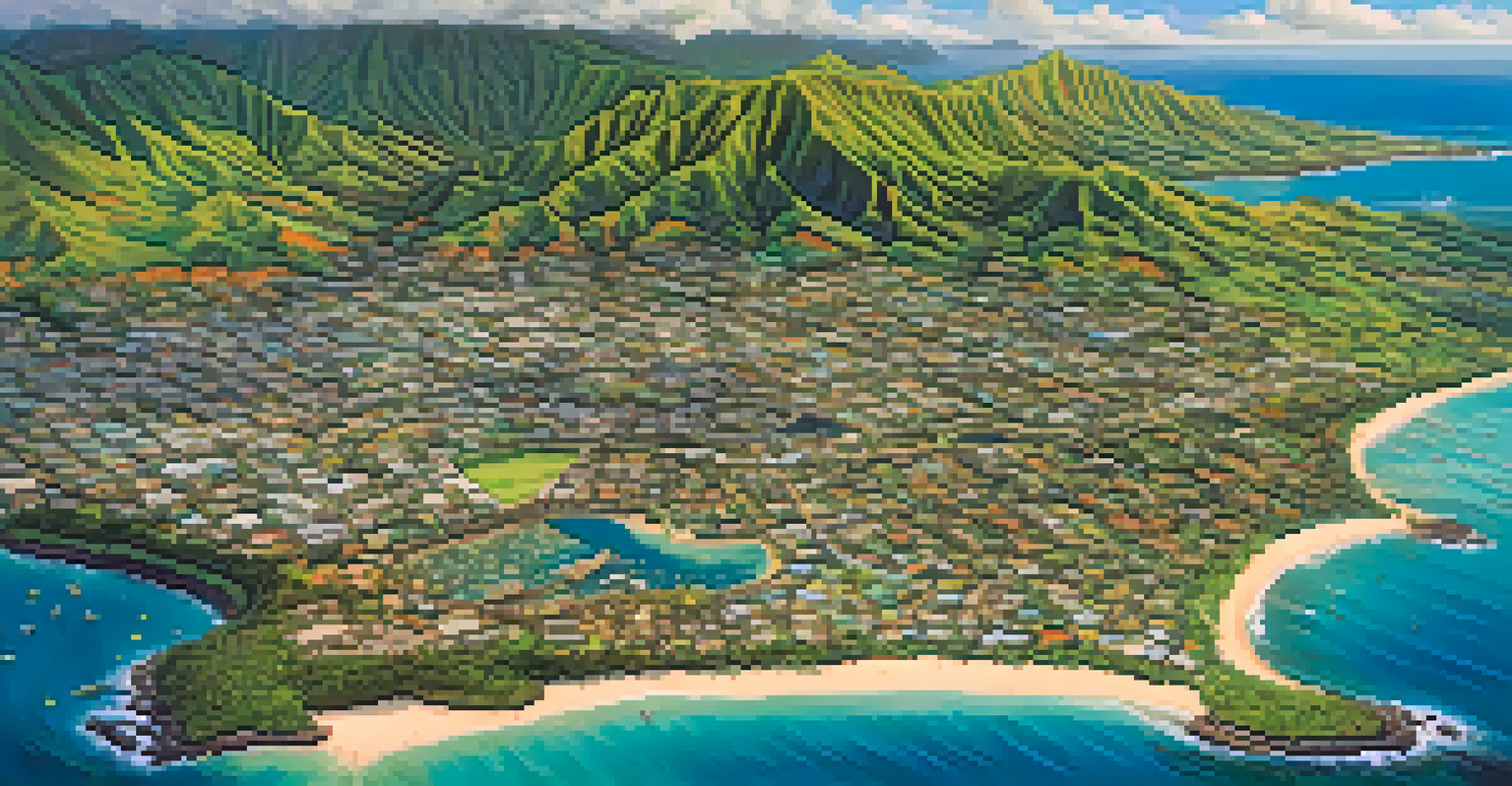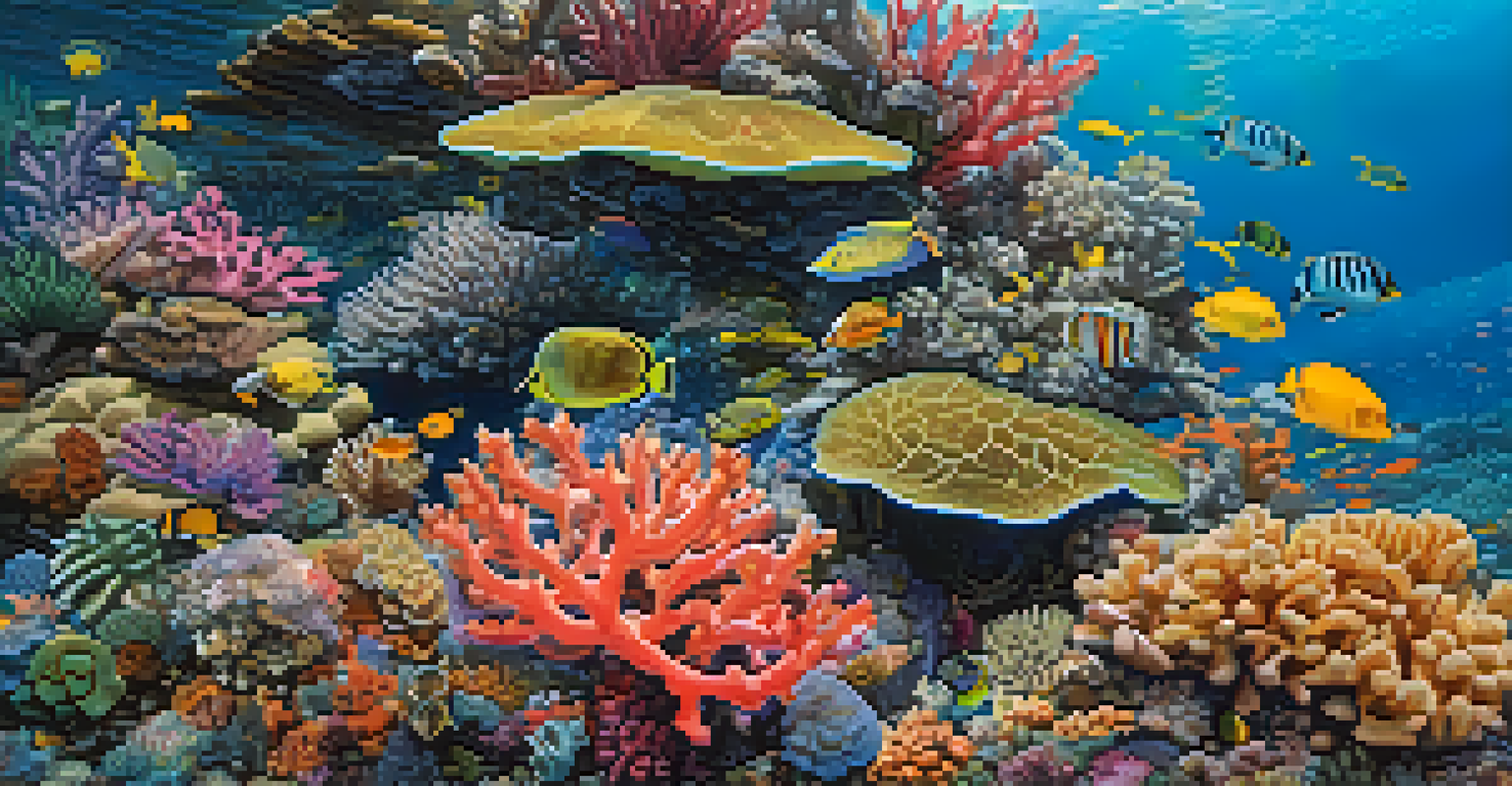The Role of Ocean Currents in Shaping Honolulu's Climate

Understanding Ocean Currents and Their Importance
Ocean currents are large-scale flows of seawater that move continuously through the world's oceans. They play a crucial role in regulating climate, weather patterns, and marine ecosystems. Just like rivers flow through land, these currents transport heat and nutrients across vast distances, making them a vital component of our planet's climate system.
The ocean is a central part of the Earth’s ecosystem, and understanding its currents is crucial for predicting climate and weather patterns.
In Honolulu, the influence of ocean currents is particularly significant due to its geographical location in the central Pacific. The warm waters from the equator travel northward, while cooler currents move southward. This interplay not only affects local temperatures but also contributes to the overall weather conditions experienced in the region.
Understanding these currents is essential for predicting weather patterns and managing marine resources. For instance, knowing when to expect warmer waters can help local fishermen plan their trips more effectively, ensuring they catch fish when they're most abundant.
The Role of the North Pacific Current
The North Pacific Current is a major ocean current that flows eastward across the northern part of the Pacific Ocean. This current brings warmer water from the equatorial regions towards Hawaii, including Honolulu. As this warm water interacts with the cooler air above, it contributes to the mild and pleasant climate that the islands are known for.

Because of this current, Honolulu enjoys relatively stable temperatures throughout the year, making it a popular destination for tourists seeking sun and warmth. The consistent temperature is a result of the ocean's ability to absorb and redistribute heat, creating a comfortable environment not just for humans, but for various marine species as well.
Ocean Currents Shape Local Climate
Ocean currents, like the North Pacific and Kuroshio currents, significantly influence weather patterns and temperatures in Honolulu.
Moreover, the North Pacific Current influences rainfall patterns in the region. It helps to create trade winds that bring moisture-laden air, which can lead to the occasional showers that keep the islands lush and green.
How the Kuroshio Current Affects Weather Patterns
The Kuroshio Current, also known as the Japan Current, is another significant player in shaping Honolulu's climate. This warm current flows northward along the eastern coast of Taiwan and the Philippines, eventually influencing weather patterns across the Pacific. Its warmth can modify atmospheric conditions, leading to changes in temperature and precipitation in Hawaii.
We must protect the oceans and their currents; they are vital for the health of our planet and the future of all life.
When the Kuroshio Current interacts with local winds, it can lead to increased humidity and warmer temperatures in Honolulu. This is especially noticeable during the summer months when the combination of warm ocean waters and trade winds can create a tropical paradise for residents and visitors alike.
Furthermore, changes in the strength or direction of the Kuroshio can also impact storm patterns. A stronger current can lead to more intense weather systems, while a weaker current might result in calmer conditions, showcasing the delicate balance of oceanic influences on local climate.
The Impact of El Niño and La Niña Events
El Niño and La Niña are terms that refer to periodic fluctuations in ocean temperatures in the Equatorial Pacific. These phenomena can have dramatic effects on weather patterns around the world, including in Honolulu. During an El Niño event, warmer ocean temperatures can lead to increased rainfall and possibly more severe storms in the region.
Conversely, La Niña typically brings cooler ocean temperatures, which can result in drier conditions and reduced rainfall. This variability means that residents and businesses in Honolulu need to stay flexible and prepared for changing weather patterns, particularly when planning outdoor activities or events.
Impact of El Niño and La Niña Events
Fluctuations in ocean temperatures during El Niño and La Niña events lead to dramatic changes in rainfall and storm patterns in Honolulu.
The influence of these events can also affect marine life, as shifts in temperature impact fish migration patterns. Understanding how these currents and climate phenomena work together allows locals to adapt and make informed decisions about their environment and livelihoods.
The Role of Trade Winds in Climate Regulation
Trade winds are the steady winds that blow from east to west across the tropical regions of the Earth, including Hawaii. In Honolulu, these winds play a crucial role in regulating temperatures and weather conditions. They help to moderate the heat from the sun, providing a cooling effect that makes the climate more enjoyable.
As the trade winds blow over the ocean, they pick up moisture, which can lead to rainfall when they reach the islands. This consistent flow of air helps maintain the lush landscapes of Honolulu and supports its diverse ecosystems. Without these winds, the islands would likely experience much hotter and drier conditions.
Moreover, trade winds also affect ocean currents. The interaction creates a dynamic system that constantly reshapes the marine environment around Honolulu, ensuring that fish populations and coral reefs thrive.
Implications for Local Ecosystems and Biodiversity
The interplay of ocean currents and climate in Honolulu has profound implications for local ecosystems. The warm waters brought by these currents support a diverse range of marine life, from vibrant coral reefs to various fish species. This biodiversity is vital not just for ecological balance, but also for the local economy, particularly through tourism and fishing.
In addition, the currents help to transport nutrients across the ocean, which is essential for sustaining marine food chains. Healthy ecosystems rely on this nutrient flow for growth and reproduction, meaning that changes in ocean currents can have significant ripple effects on local wildlife.
Trade Winds Regulate Conditions
Trade winds help moderate temperatures and bring moisture, playing a critical role in maintaining the lush landscapes of Honolulu.
Protecting these currents and understanding their role in the ecosystem is crucial for conservation efforts. As climate change continues to impact ocean temperatures and currents, recognizing how these elements interconnect is key to safeguarding Hawaii's unique marine biodiversity.
Future Considerations: Climate Change and Ocean Currents
As we look towards the future, the effects of climate change on ocean currents are becoming increasingly apparent. Changes in temperature and sea levels can alter current patterns, which may have a direct impact on Honolulu's climate. For example, warmer ocean waters can lead to more extreme weather events, affecting both the environment and local communities.
Monitoring these changes is essential for predicting how future climate conditions will unfold. Local researchers and scientists are working to gather data and analyze trends to help inform policies and strategies that can mitigate the impacts of climate change on Hawaii's unique climate.

Ultimately, understanding the role of ocean currents in shaping Honolulu's climate will be crucial for preserving the islands' natural beauty and ensuring a sustainable future for both residents and visitors alike. By staying informed and proactive, we can help protect this paradise for generations to come.